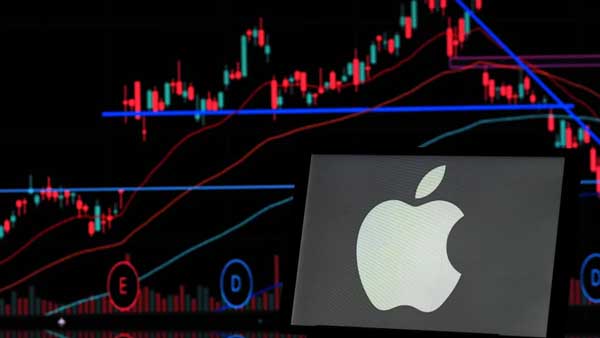 News Staff
News Staff![]() -
Apr 7 -
Business
Apple
Tariff Tango
-
814 views -
0 Comments -
0 Likes -
0 Reviews
-
Apr 7 -
Business
Apple
Tariff Tango
-
814 views -
0 Comments -
0 Likes -
0 Reviews

DLNews Biz:
In a twist worthy of a soap opera—complete with dramatic crashes and lavish lifestyles—Apple Inc. is suddenly facing a grim storyline. Once the darling of investors and tech enthusiasts alike, Apple finds itself navigating choppy waters, courtesy of the turbulent tariff tango initiated by former U.S. President Donald Trump (78).

Picture this: Apple's stock, which was cheerfully trading at over $218 per share in early April, has plunged into a heart-stopping drop to around $180. That's not just a dip—that's an elevator plummet, wiping out a staggering $328 billion from its lofty market valuation. Even the sleekest iPhone can't ease the collective panic gripping Wall Street.
The root of Apple's woes lies, ironically, in the very supply chains that once boosted its meteoric rise. Most iPhones proudly sport a "Made in China" tag—and unfortunately for Apple, China is the epicenter of Trump's economic earthquake, rumbling with punitive tariffs totaling an eye-watering 54%. Smaller Apple production hubs in Vietnam and India aren’t getting off easy either, suffering collateral tariff damage in this escalating trade battle.

So who ultimately pays the price? Spoiler alert: It's the American consumer who might soon gasp at price tags resembling those of small used cars. Analysts quoted by Reuters predict the price of an iPhone could surge a whopping 43% if Apple passes on these additional costs. Imagine casually dropping $2,300 for the sleek new iPhone 16 Pro Max, complete with its dreamy 6.9-inch display and expansive 1 terabyte storage, instead of the already wallet-straining $1,599. Even the more modest standard iPhone would leap from $799 to an eyebrow-raising $1,142. Goodbye impulse buy, hello financial consultation!
But wait, there's more—iPads, Macs, and those delightful AirPods you keep losing would also get swept up in the price tsunami, spiking anywhere from 39% to 42%. If tariffs hold steady, Apple's potential losses could spiral up to a nightmarish $40 billion. Morgan Stanley offers a slightly more optimistic view, pegging Apple's annual losses at a mere $8.5 billion—a small consolation prize in an otherwise costly game of tariff roulette.
So, is Apple’s future bleak or just temporarily bruised? One thing is certain: If this tariff war continues, your next trip to the Apple Store might require not just your credit card but perhaps a small bank loan, too. Stay tuned—this story is far from finished.

At Desert Local News, connections are everything. We're not just another social networking platform—we're a lively hub where people from all walks of life come together to share stories, spark ideas, and grow together. Here, creativity flourishes, communities grow stronger, and conversations spark global awareness.